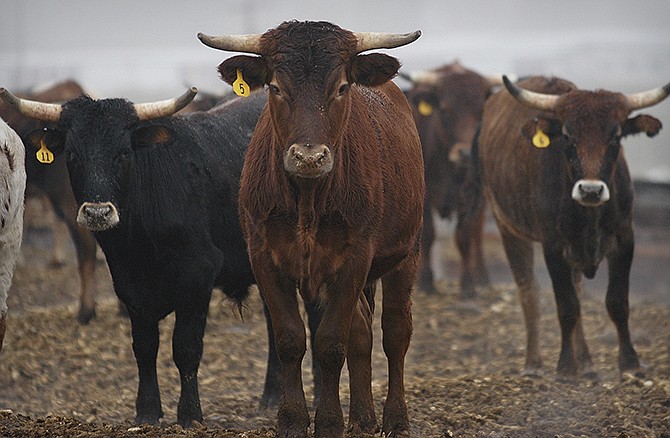BOISE, Idaho (AP) - More than 150 cattle valued at about $350,000 have been reported missing in southeastern Idaho, and authorities suspect modern-day cattle rustling as beef prices have soared.
"Right now it's just insane what those things are worth - it scares me to death," Idaho State Brand Inspector Larry Hayhurst said. "Which means the incentive is there."
Three ranchers say roundup searches in recent weeks in the hills and gulches on the remote summer range where the cattle graze have come up empty in two counties.
The losses include a herd of 50 Black Angus consisting of 25 cows and 25 calves valued at $150,000. Another herd of 41 cow-calf pairs, meaning 82 animals total, plus 10 cow-calf pairs, or 20 animals, from another rancher are also reported missing. Those missing cattle are valued at about $200,000.
Authorities say other ranchers in the region have reported smaller losses, but note that typically one or two cow-calf pairs go missing almost every year. An entire herd disappearing is something else.
"At this point we don't have any suspects," said Sgt. Jeff Edwards of the Bonneville County Sheriff's Office, which is investigating the missing Black Angus.
He said an aircraft was used in that search, and so far no other rancher has reported accidently rounding up the cattle, which happens sometimes.
The sheriff's office in nearby Bingham County, where the 102 cattle are missing, is also stumped.
"It is a very cold trail," said Capt. Robert Sobieski. "There's no way of knowing when they went missing. That's what makes it toughest."
But he also said that deputies aren't ready to confirm that the cattle have been stolen because they could have mingled with other herds in the area. But there have been no reports of that from other ranchers so far.
Authorities said taking that many cattle would likely involve tractor-trailers, and at least several people on horseback or all-terrain vehicles to round them up.
"We've never seen cattle prices this high before in the history of the cattle market," said Brad Higgins, a rancher in northern Idaho near Cottonwood and board member of the Idaho Cattle Association. "I worry about (theft) a little bit out here."
U.S. cattle industry officials say beef prices are at record highs due to a combination of factors that include past droughts that caused cattle numbers to shrink and increased demand for beef on a global scale following the Great Recession.
"More people entering the middle class want to eat up the food chain," said Kevin Good, a senior market analyst for CattleFax, a group that tracks the industry.
He said the size of the nation's cattle herd has shrunk in 15 of the last 17 years, while at the same time the human population has grown.
He also said some cattle producers are currently withholding cows and heifers from the market in an attempt to increase herd sizes, another factor leading to less beef on supermarket shelves.
"It's supply driven," Good said. "At some point we'll expand the herd."
Good said the U.S. had a cattle population of 88 million in 2014, and that Americans will eat about 54 pounds of beef per person this year. That compares to a cattle population of about 103 million in 1996, when American ate about 67 pounds of beef per person per year.
Higgins said ranchers are having to decide whether to cash in on high prices by selling more heifers that would normally be used to replenish or increase herd numbers. Retaining those cattle is essentially betting that prices will stay high. Higgins, 45, said he's sticking with his plan to hold onto about 15 percent of the heifers to maintain a herd of about 225, but could understand if others chose differently.
"It'd be a great time to cash in on the market if you're at an age where you're close to retiring," he said.

